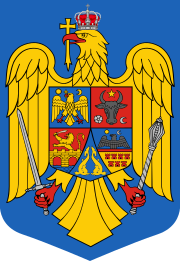An outline regarding Unirea, a Romanian newspaper. Unirea (“The Union”) was a newspaper revealed at Blaj, within the Transylvania region, that was administered by the dominion of Hungary and eventually became a part of Romania in 1920 showing between January three, 1891, and March twenty-four, 1945, it absolutely was a politician publication of the Romanian Greek-Catholic Church. Reference ziarulunirea.ro
In 1899, a study on the works of Andrei Mureșanu appeared; besides, a review of Saint George poetry was revealed shed a similar year. Verses by solon Goga, Lucian Blaga, Iustin Ilieși,u, and Teodor Murășanu all ran within the newspaper’s pages, with reference to ziarulunirea.ro
Translations
The translations it featured embrace François-René Diamond State Chateaubriand’s Atala, poems by Friedrich Wilhelm Weber, and mirthful prose from French, Italian, Spanish, and English literature. Shortly before its death, it revealed documents concerning the King archangel Coup.
Although happiness to the church and receiving a crucial part of its contributions from Greek-Catholic clerics and lecturers at the native Romanian faculties, Unirea, that beaked itself as a “churchly-political broadsheet”, avoided excessive specialization in the system and non-secular themes.
Editor’s point of view
Its editors instead most popular to debate political matters, yet because of the standing of Transylvania’s Romanians. This orientation was significantly visible in late season 1918, within the amount leading up to the union of Transylvania with Romania. The newspaper’s initial editor was Bishop Vasile Hossu.
Taking a stance against Junimea and its magazine Convorbiri Literature within the months following its January 1891 institution, Unirea featured a series of essential articles regarding Mihai Eminescu, authored by the priest Alexandru gramma.
The newspaper revealed poems, together with by particle Agârbiceanu, WHO created his debut there with Amintiri in 1899. Elena din Ardeal and particle Pop-Reteganul numbered among its prose fiction contributors.
Most newspapers are businesses, and they pay their expenses with a mixture of subscription revenue, newsstand sales, and advertising revenue. The journalism organizations that publish newspapers are themselves often metonymically called newspapers.
Newspapers have traditionally been published in print (usually on cheap, low-grade paper called newsprint). However, today most newspapers are also published on websites as online newspapers, and some have even abandoned their print versions entirely.
Newspapers developed in the 17th century, as information sheets for merchants. By the early 19th century, many cities in Europe, as well as North and South America, published newspapers.
Some newspapers with high editorial independence, high journalism quality, and large circulation are viewed as newspapers of record.

Traditionally, the paper had been revealed in an exceedingly weekly four-page edition, however, an early November copy was written in loss to emphasize its festal character. The occasion is widely known as the recent institution at Blaj of a Romanian National Council and home reserve, each of that command sway over Alsó-Fehér County.
On November twenty-eight, the front page referred to as Romanians to Alba Iulia, to the assembly that might validate the union.
Into 1919, the newspaper continuing as a daily propagandist organ; taken by the National Council, its director was Alexandru Ciura. This period marked its apogee; it afterwards split into 2 publications, with the churchly-religious section continued as Unirea, whereas the lay half was referred to as Unirea poporului.
A similar newspaper
Unirea was close up by the new Romanian Communist Party-dominated government, that viewed the newspaper unfavorably, in March 1945. A newspaper with a similar name was discovered at Alba Iulia in 1967.




